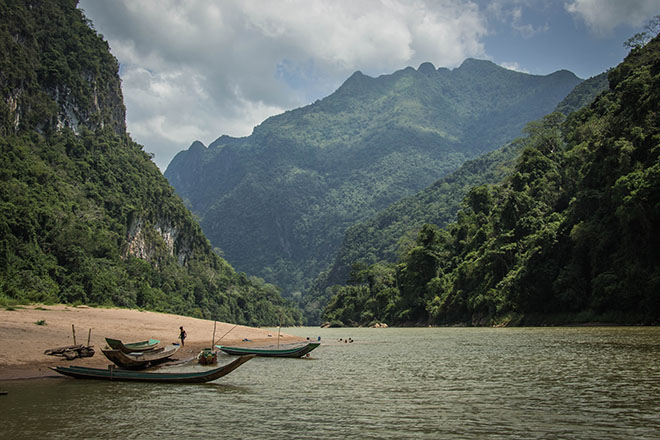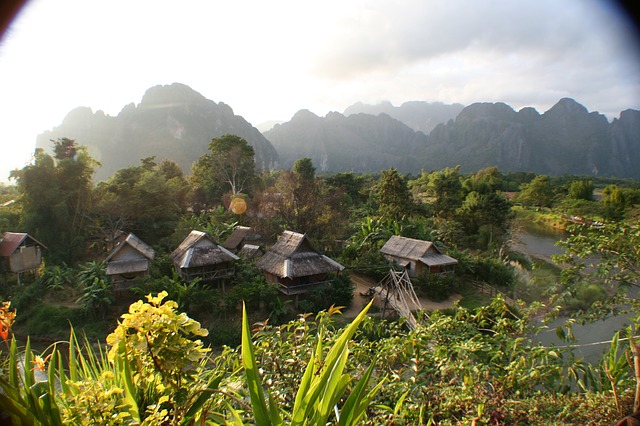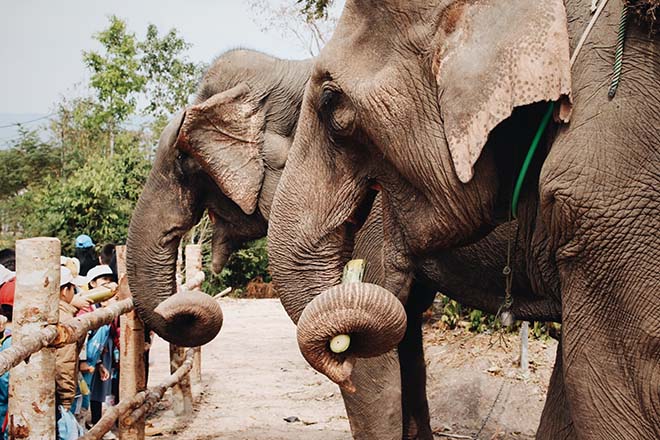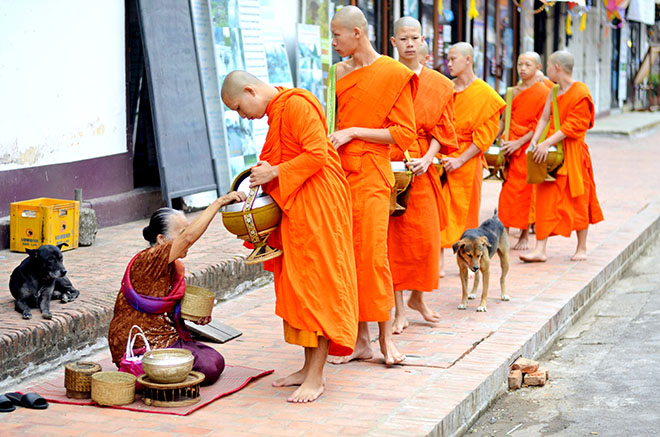As a modest nation surrounded by tourism powerhouses such as Thailand and Vietnam, Laos is often overlooked and even mistaken for their next-door neighbors. If you find yourself having the same idea about this sovereign nation, I can tell you for sure that you are completely wrong. Laos is a country full of mysteries and excitements.

Photo by Ioana Farcas
Doubtful about that? Read the following 10 facts to be assured.
#1. The Only No Ocean Country In Southeast Asia
Southeast Asia, consisting of 11 countries, is becoming a new destination for wanderlust souls because of its untouched nature including thousand miles of golden sand encompassing the tranquil blue oceans. Unfortunately, Laos isn’t granted that gift. To make up for the lack of stunning beaches, the landlocked nation possesses a series of lakes and rivers. Nong Fa lake, which was formed in a volcanic mouth, has an unknown depth, creating a lot of myths in the surrounding area.

Photo by Chris Hilbert
#2. The Second Greatest Rice Consumption All Over The World
Asian countries, in general, are having rice as a staple food. But Laos people are extremely in love with rice. On average, a citizen of this country consumed around 160 kg a year, next to the world record Bangladesh at 172 kg in 2013. This figure almost doubled the amount of rice each Chinese individual had annually. Sticky rice is served sweet, sour or fermented in almost every meal in Laos from breakfast to supper.
#3. Laos Means The Land Of A Million Elephants
The initial word in the native language for the country name is “Lane Xang”, which literally means “The Land of Million Elephants”. Back in the history when the Kingdon capital was set in Luang Prabang, surrounded by huge grazing pastures and wild herds of elephants. Elephants also used to be the primary means of transports and a secret weapon to fight against the invaders. The essential role of this species made the royal emperor at that time name the country “The Land of Million Elephants”.
Still, due to wars, deforestation, human cultivation, the elephant population was decreasing rapidly. Currently, there are only more than 2,500 wild and captive elephants inhabiting in Laos.

Elephant play a very important role in Laos. Photo by Irene Grace Tolentino
#4. Giant, Ancient Stone Jars Scattering Around A Mountain Hill
The Plain of Jars locates at the lower foothills of the Xiangkhoang Plateau. It is a megalithic archaeological landscape which is home to about 2,500 stone jars stretching for hundreds of kilometers. It is said that the jars have been there since 500 BC to AD 200. Archaeologists are still unsuccessful to find out who and why to put such a large number of jars in this place, making the Plain of Jars one of the most fascinating mysteries of all time.
#5. A Unique Underground Boat Trip
When visiting Laos, you can have a chance to experience an underground boat trip to explore Kong Lor Cave, a karst limestone cave in Khammouane Province. The cave sets on the Nam Hin Bun River with dramatic karst formations cited as a “one of Southeast Asia’s geological wonders”.The boat trip will lead you through 7 km of the cave length, passing a bright emerald pool and magical rock formations.
#6. The Widest Waterfall In Southeast Asia
Though the country doesn’t have any ocean, Laos’ nature ain’t less significant than the rest of Southeast Asia. Pha Pheng Fall is an example. Located in Champasak Province, Pha Pheng Fall cuts through the Mekong River, making a deep fall of about 21 m at the highest point. There are also thousands of islets and countless waterways, giving the area the name Si Phan Don, in other word, ‘The 4,000 islands’.
#7. A Similar Language To Thai
It’s hard to say Laos isn’t influenced by its neighboring countries. During the Vietnam War, as a border-borne nation, Laos suffered more than two billion tonnes of bombs, which was far more than all of the bombs dropped on Europe during World War II. Language is another impact made by the nearby country, Thailand. Lao can be closely related to Thai in terms of vocabulary and structures.
#8. A Buddhist Stupa Adorned In Gold
As the principle religion of approximately 65% of the national population, Buddhism and Buddhist architect are commonly found in top-picked tourist attractions in Laos. The most outstanding may be Pha That Luang, meaning Great Stupa. It is a three-level stupa at the maximum height of 44 meters, all covered in gold. Pha That Luang was possibly constructed in the 3rd century in Vientiane. Undergone some restoration, it is now the symbol of Laos history and religion.
#9. Luang Prabang Mornings With Monks’ Rituals
Most of the Laotian practice Theravada Buddhist, the most ancient Buddhism extant school. Many long-established traditions are still preserved and followed by the monks. Morning Alms or “Sai Bat” is a ceremony in the morning when people donate their food to the monks. It is especially popular in Luang Prabang, which has a wide range of Buddhist monasteries and temples. If you wake up early, you can see the monks in yellow robes walking around the neighborhood, holding offerings from the locals.
Monks in Luang Prabang. Photo by Photo by Laurentiu Morariu
#10. A Cave With Hundreds Of Buddha Sculptures
About 25 km away from northern Luang Prabang, you can reach Pak Ou cave complex, including the Tham Ting (the lower cave) and the Tham Theung (the upper cave) overlooking the Mekong River. Pak Ou caves are famous for hundreds of miniature Buddha sculptures, mostly from wood to decorate naturally carved shelves on the walls. The Buddha sculptures have various positions such as meditating, teaching, reclining…





Comments